Asian hornet: a major predator for honey bees
The Asian hornet (Vespa velutina, not to be confused with its European cousin Vespa crabro, or with the giant hornet Vespa mandarinia that has recently been spotted in North America) has become within just a few years, the second main predator of western European honey bees.
It first arrived in Europe in 2004 in the southwestern region of France and has since spread to the entire French territory, and gradually entering its closest neighbours (Spain, Italy, Portugal, the UK, Belgium, Germany, Switzerland).
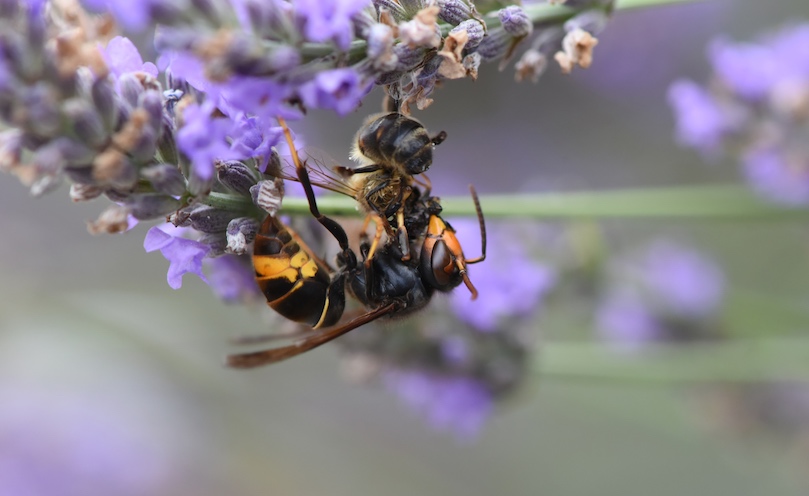
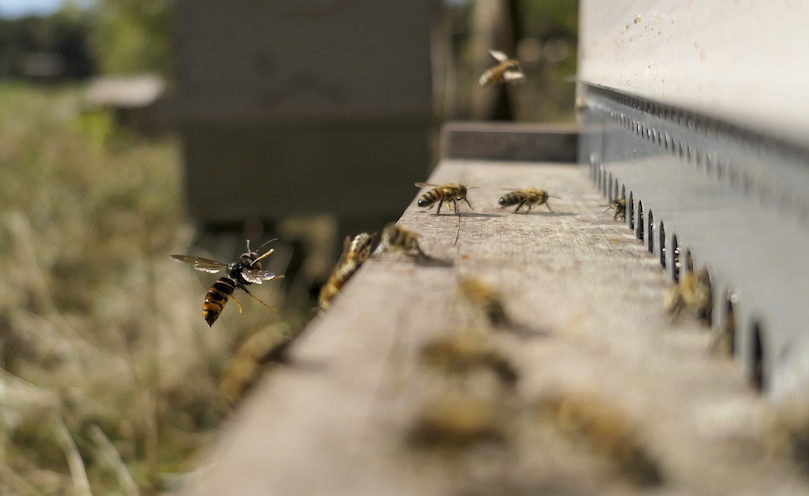
Impact on bee colonies
The Asian hornet hovers around the hive’s entrance, watching for bees, causing major stress for the colonies.
The inability of bees to forage freely due to the havoc caused by the hornet, leads to starvation of the bees, subsequently causing their death. In addition to bees, this hornet attacks a huge variety of insects, posing a major threat to biodiversity.
In some countries (e.g. France), the Asian hornet is now classified as a national hazard, allowing professionals and local authorities to propose approved control programs. The State also finances studies on the monitoring and effectiveness of control methods.
How to fight Asian Hornets?
Currently, these countries have two main control solutions: nest destruction and hornet trapping (spring trapping for foundresses, summer trapping for workers, and autumn trapping for breeders).
These two strategies do not allow the eradication of the hornet. But they contribute to slowing down the propagation and the impact on the hives. Beekeepers also use alternative solutions, such as electric rackets and hive shields).
Today, the main challenge for research is to identify a trapping solution that is both effective and selective. One of the challenge is obviously to limit the impact of trapping on biodiversity.
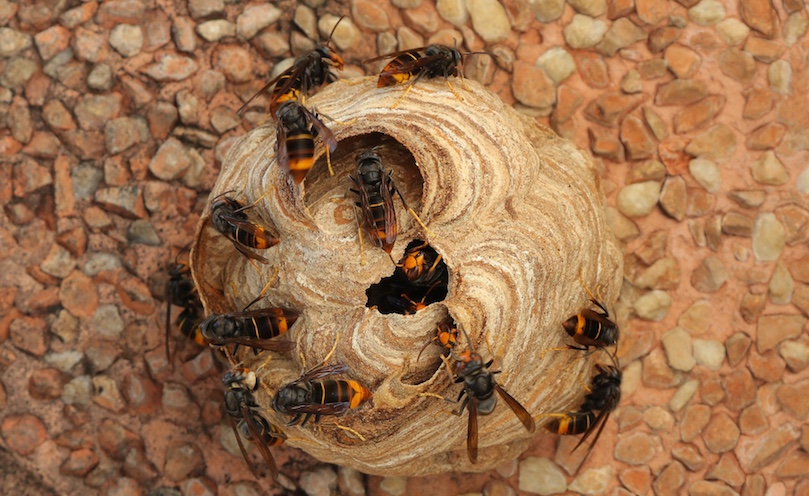
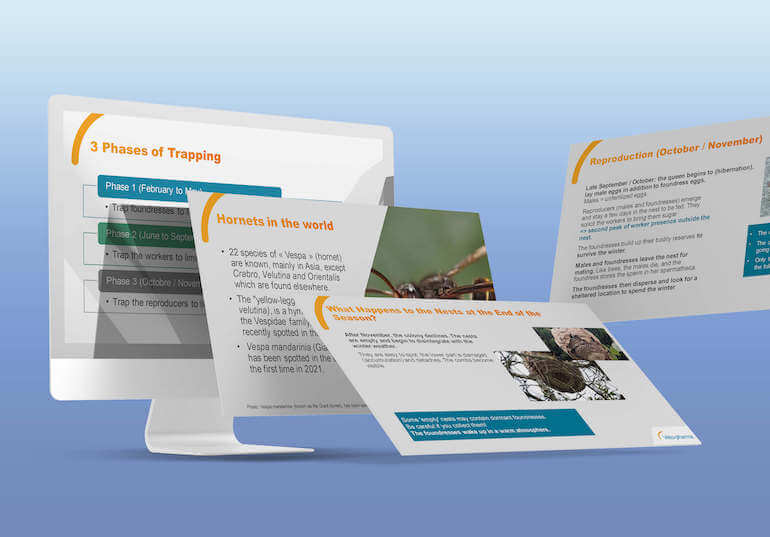
Presentation summarizing the key points to understand biology and cycle of the Asian hornet and how to trap it.
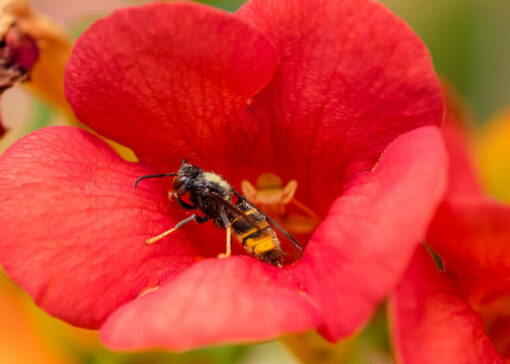
Hive Under Siege: The Growing Threat of Hornets to Bee Colonies
Discover the threat posed by hornets for the crucial pollinators. Enter into their life cycle and roles on ecology and biodiversity.
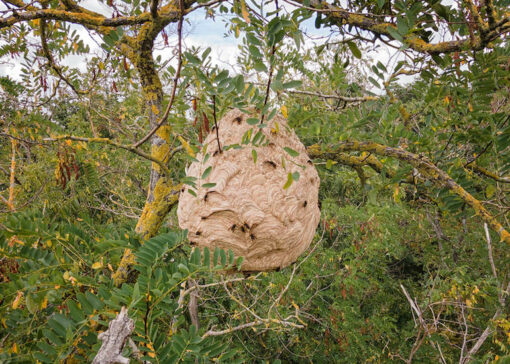
Spot, Approach, Destroy: Dealing with Yellow-legged hornet Nests
Learn the best techniques to spot, approach, and safely destroy the nests of the invasive Yellow-legged hornet
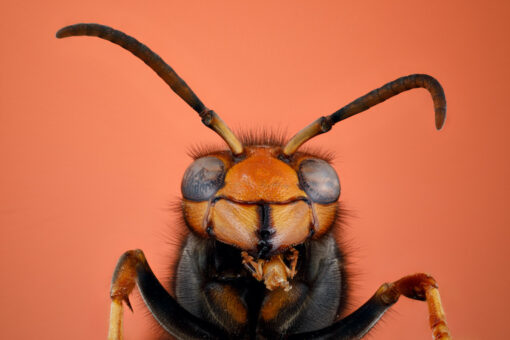
Guardians of the Apiary: Trapping the Yellow-legged Hornet Effectively
Table of contents Yellow-legged hornets (Vespa velutina, also called “Asian hornets” in Europe) pose a significant threat to honeybees, feeding on them voraciously. But beekeepers, fear not! Effective solutions are at hand. Véto-pharma, with years of experience, brings you the perfect trap to counter this menace. This article is following a first one called “The… Continue reading Guardians of the Apiary: Trapping the Yellow-legged Hornet Effectively
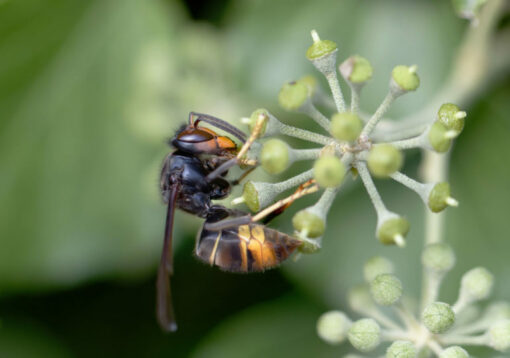
The Unwelcome Guest: Introducing the Yellow-legged hornet to America
Dive into the lively world of the Asian Hornet – America’s latest winged visitor. Discover its life, habits, and its not-so-sweet impact on our bee colonies.
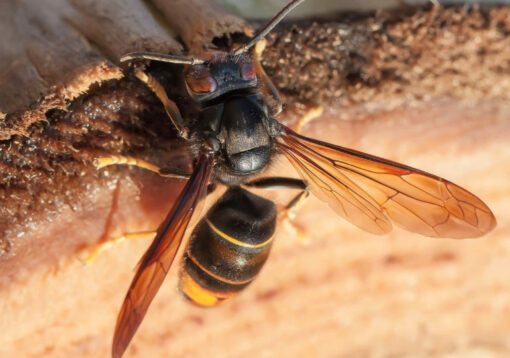
Quiz – Vespa velutina, the Asian hornet
In this quiz, we have put together 15 questions about the Asian hornet, from its Latin name Vespa velutina. The Asian hornet is a major predator of bees.
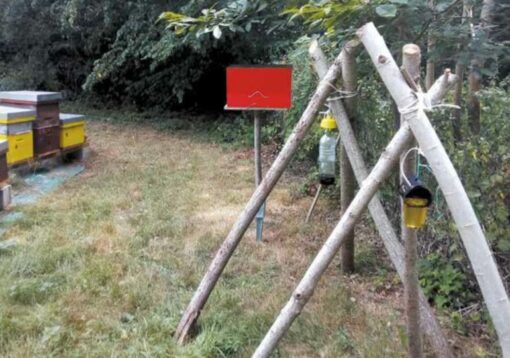
Assessment of the effectiveness and selectiveness of VespaCatch®, Jabeprode® and bottle traps for summer/autumn trapping
A recently published study conducted in 10 apiaries in the Eure department in the summer/autumn of 2019 compared the effectiveness and selectiveness of three Asian hornet (Vespa velutina) trapping devices commonly used by beekeepers.
FRE-23-EU-N01-01/22
